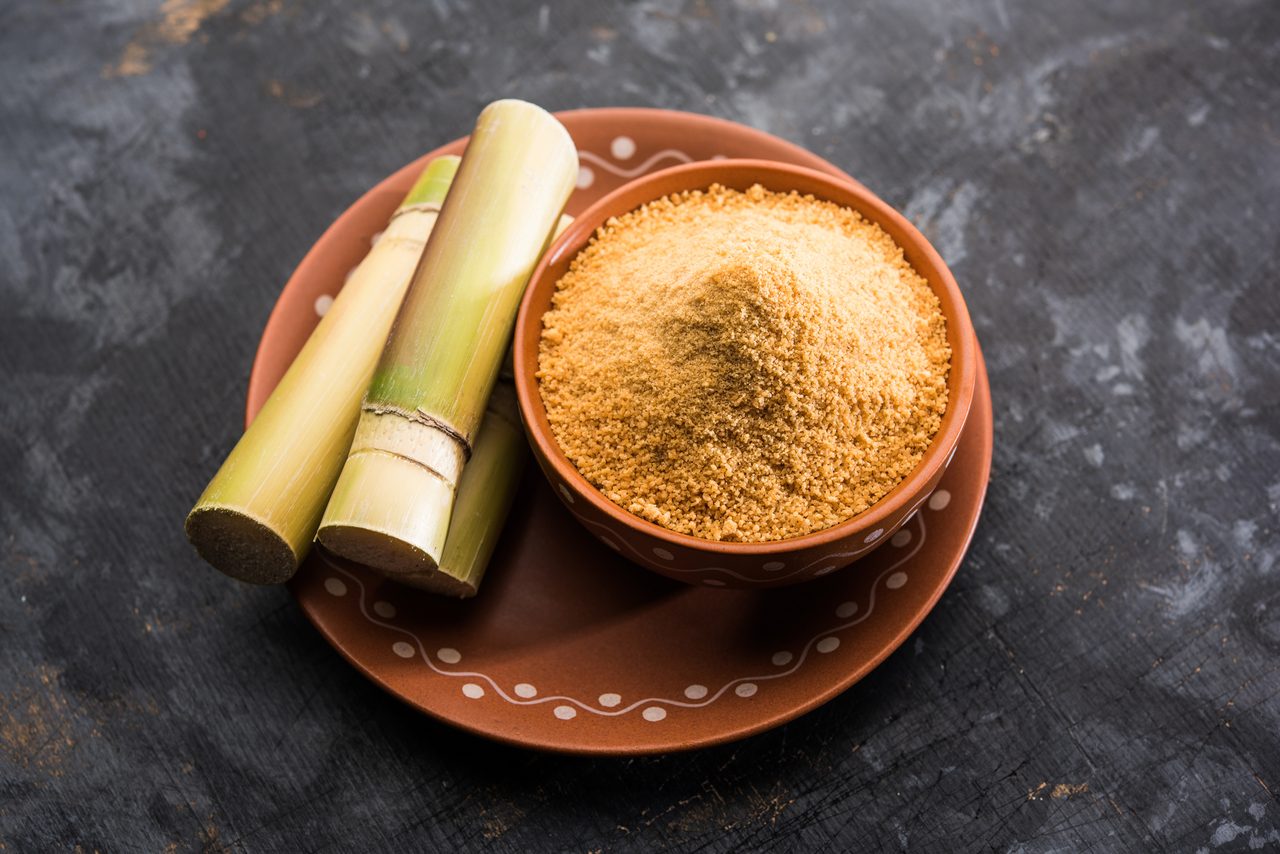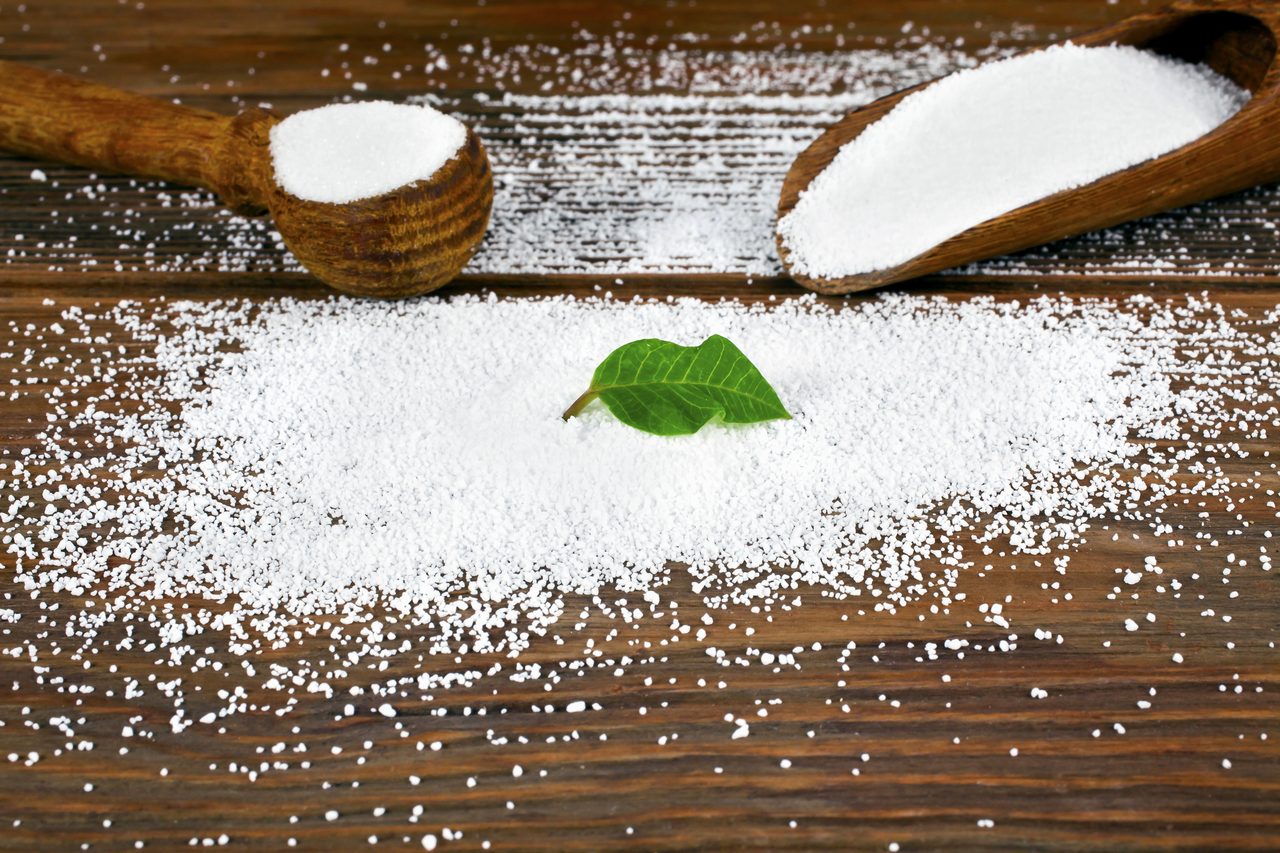Sweeteners
ingredients
The BOTTOM LINE
- Emerging natural sweeteners
- Sugar reduction strategies
- Multifunctional ingredient options
Sweetly subtle
New sweetening tools and techniques help maintain sweetness, flavor, and functionality, while also reducing sugar.
Joyce Friedberg, Contributing Writer
Sweet is one of the five basic taste sensations. While most people enjoy sweets, they are also mindful about the amount of sugar and carbs in their diet.
Sarah Diedrich, marketing director, global sweetening and texturizing, ADM, Chicago, shares some insights from ADM’s proprietary research, “ADM Outside Voice,” which found 8 out of 10 consumers are engaged in sugar reduction. Of those, 79% find sugar reduction is important for bars and snacks, and 70% for baked goods.

SPONSORED BY
Not all sweeteners are created equal, and shoppers are gravitating to more natural and naturally sourced sweeteners. Cargill, Minneapolis, fields an annual proprietary research study called “IngredienTracker” to understand consumer perceptions of specific ingredients. This research is conducted among a representative sample of 11,000 U.S. grocery consumers. In the most recent research (2021), the company evaluated over 260 ingredients, which included 60 sweeteners and bulking agents. Carla Saunders, senior marketing manager, high-intensity sweeteners, shares some key highlights:
- Pantry staples like sugar, honey, and brown sugar post high familiarity scores
- Stevia is also familiar to the majority of consumers
- Stevia is widely viewed as healthy
Other sweeteners that score well in the “IngredienTracker” research are honey, agave, monk fruit extract, rice bran extract, organic cane sugar, and molasses. Conversely, consumers rate sugar, corn syrup, aspartame, and high-fructose corn syrup as the least healthy.
Make no mistake: nomenclature matters. Consumers have a more-favorable view of beet sugar, with its clear reference to its botanical source, as compared to sugar.
The perennial challenge with reducing sugar is that while we want foods with lower sugar and carbs, we are not willing to sacrifice taste. There are many considerations that product developers need to take into account when reducing sugar, including claims, label implications, manufacturing implications, replacing sweetness, rebalancing flavor, and rebuilding functionality.
Great taste, lower sugar
One of the plant-based alternative natural sweeteners that consumers are hearing more about is coconut sugar. Coconut sugar is the coconut nectar that has been boiled, reduced, and granulated.
Global Organics, Cambridge, MA, recently introduced a new Organic Coconut Sugar in a fine mesh size, notes Cate Baril, marketing manager. “The product is minimally processed thereby retaining phytonutrients, essential minerals, electrolytes, amino acids, and vitamins.”
This fine mesh size helps enable new uses. “Typically, coconut sugar is sold at a 14/16 mesh size which gives it a pleasant crunch,” says Paul Whitman, category manager, fruits and vegetables, Global Organics. “While this size dissolves easily, there are some applications where a finer mesh, 30/50, is called for. Fine-mesh coconut sugar completely melts without any graininess, so it is a very good option for any fine-textured cakes or cookies. Organic coconut sugar fine mesh is a 1:1 replacement for cane sugar. It has a high scorch point, so is a good option for any formula requiring higher heats or caramelization. It is also ideal for glazes and chocolate toppings.” The ingredient is lightly sweet, with the caramelized flavor of coconut sugar. It’s organic and non-GMO, has a low glycemic index of 35, is kosher and halal, and Fair Trade is also available.

Courtesy of Global Organics
Global Organics has also launched a new Organic Agave Inulin Powder. Inulin, a prebiotic dietary fiber that feeds good bacteria in the gut, can be found in thousands of different plants, one of which is agave. “We work with an independent, democratic, community-based project that represents more than 800 farmers in Jalisco, Mexico,” says Alex Puglia, business development manager. “They created an agave nursery, allowing for a constant source for young plants throughout the year. By staggering plantings, they are much less dependent on seasonal weather fluctuations or supply-chain challenges. Powdered inulin is high in fiber, and acts as a bulking agent for reduced-sugar recipes.” Formulators can use agave inulin to replace up to 50% of the sugar, he notes. It contributes 1.5–2.0 calories per gram, compared to 4 calories per gram for sugar. This organic, non-GMO, kosher, low-calorie sweetener has a glycemic index of 0.
Grain is another sweetener source. Briess Malt & Ingredients, Chilton, WI, offers Innosweet Whole Grain Sweetener, a whole-grain ingredient that delivers sweetness created during natural sprouting, gentle cooking, and drying, all while adding flavor and browning potential in formulations. This ingredient can help deliver natural sweetness, reduce added sugar, and can add whole grains.
Innosweet offers sweetness at about 40% of sucrose, but it can help reduce added sugar in bakery products, says Wiwid Paramita, Ph.D., technical sales specialist, Briess Malt & Ingredients. “InnoSweet has a mild graham cracker flavor that’s complementary to a wide range of baked goods. Any bakery recipe that uses flour can benefit from InnoSweet. Keep in mind it is not a 1:1 sugar or sucrose replacement and behaves more like a flour as opposed to a sugar.” This ingredient can be used in snacks and baked goods like bagels, bars, biscuits, crackers, and sweet goods.

Courtesy of Malt Products Corporation
Malt Products Corp., Dayton, OH, offers MaltRite malted barley extract and OatRite oat extracts, which can evoke a “wholesome, nostalgic feel,” says Amy Targan, president. “MaltRite malted barley extract and OatRite oat extract can either substitute for sucrose or complement it—at only half the sweetness of sucrose. Malt and oat extract offer nutty, toasted flavor profiles. MaltRite and OatRite are naturally high in maltose, protein, amino acids, minerals, soluble fiber, and antioxidants. MaltRite offers not only good nutrition, but also many functional qualities, including browning, crystal control, humectancy, improved texture, and extended shelf life.”
A sister company of Malt Product Corp., International Molasses Corp., Saddle Brook, NJ, recently introduced CaneRite Panela, an all-natural, free-flowing granulated sweetener made from the freshly squeezed juice of the whole sugar cane plant. “Unlike conventional raw sugar products, CaneRite Panela is unrefined and non-centrifuged, so that it retains all the cane plant’s original flavor and nutritional benefits; it is high in potassium and calcium. CaneRite Panela is roughly about 80% as sweet as sucrose and it is characterized by mellow notes of toffee and caramel,” describes Targan.
“MaltRite malted barley extract and OatRite oat extract can either substitute for sucrose or complement it—at only half the sweetness of sucrose.”
— Amy Targan, president, Malt Products Corp.

Ajinomoto Health & Nutrition, Itasca, IL, recently launched AJSWEET Natural Sweeteners for no sugar and reduced sugar clean label formulas. AJISWEET is extracted from stevia, and is 300–400x the sweetness of sugar, notes Ihab E. Bishay, Ph.D., senior director of sweeteners. “We use the extraction method, as it’s the most-preferred process for quality with clean labeling.”

Courtesy of Ajinomoto Health & Nutrition
Bishay notes AJISWEET Natural Sweeteners start with a clean version of stevia extract and then add natural flavor solutions, delivering a clean sweetener with few ingredients. These stevia-based sweeteners deliver sweet taste and enhanced mouthfeel with less bitterness and reduced unwanted lingering sweetness, while also minimizing off tastes, he says. It is still necessary to replace the other non-sweetening functional properties of sugar, such as browning, moisture retention, texture, etc. by combining this product with other bulking agent alternatives, he notes, in baked goods such as muffins, snack cakes, cookies, and more.
Customized solutions
Companies can choose to select and blend the individual sweeteners or companies like Batory Foods, Rosemont, IL, offers ready to use sweetener blends, including the recent Batory SweetEssentials, a line of five high-intensity sweeteners that replace sucrose, designed for sugar reduction and replacement. These new sweetening blends provide sweetness without any unpleasant aftertaste, are pre-blended for ease of use in matching sweetness and functionality, and meet clean label standards, notes Melissa Riddell, head of innovation and technical services:
- B-TRU: erythritol, allulose, stevia extract
- Applications include: bakery, cereals, bars, fillings, confections, jams and jellies
- 1.0 sucrose equivalent value (SEV), equivalent to sucrose
- B-INTENSE: erythritol, allulose, steviol glycosides, stevia extract
- Applications include: bakery, bars, cereals, confections, fillings, jams and jellies
- 3.0 SEV, 3x sweeter than sucrose
- B-FIBER: erythritol, soluble corn fiber, allulose, stevia extract
- Applications include: bakery, bars, cereals, confections
- Best suited for extruded snacks, crackers, and chips since it contains soluble fiber and the lowest level of allulose, allowing for a slightly different functionality in application making for a crispier product versus a softer or chewier textured product
- B-FIBER also works well in more delicate bakery applications such as cakes, muffins, and pastries by contributing to the structure
- 1.0 SEV, equivalent to sucrose
- B-CLEAR – (E): erythritol, steviol glycosides, stevia extract
- Applications include: bars, bakery, cereals, fillings, confections, jams and jellies
- 2.0 SEV, 2x sweeter than sucrose
- B-CLEAR – (A): allulose, steviol glycosides, stevia extract
- Applications include: bakery, bars, frosting, fillings, confections, syrups, cereals
- 2.0 SEV, 2x sweeter than sucrose

Courtesy of Batory Foods
Icon Foods, Portland, OR, recently introduced IconiSweet, a blend of allulose, erythritol, stevia, and monk fruit. It is a clean-label sweetening system that also provides functionality, such as participating in Maillard browning, and is at parity to sucrose in terms of sweetness, says Thom King, CEO.
“The proprietary blend of monk fruit and stevia extract brings a sweetness levels to that of sugar and adds useful masking that eliminates any off-notes occasionally imparted by stevia and monk fruit,” says King. “Allulose can activate leavening, and it can participate in Maillard caramelization. The precise amount of erythritol suppresses the allulose’s tendency to burn at temperatures above 280˚F. The synergy of all these clean-label compounds creates a symphony of neutral sweeteners with no added sugars to the Nutritional Facts panel.” He notes IconiSweet works well in baked applications like snack cakes and cookies.
“While sugar reduction continues to ramp up in bakery, it is possible to achieve modest reductions of 15–20% in cookies and 20–50% in cakes and muffins using ingredients like stevia and soluble fiber, with limited effect on overall product performance,” says Tim Christensen, Certified Master Baker, Cargill. “To replace the taste of sugar, next-generation stevia sweeteners are a good choice. Options like Cargill’s ViaTech stevia leaf extract and EverSweet stevia sweetener offer improved sweetness and flavor dynamics compared to earlier Reb A stevia options, enabling greater sugar reductions in a wide array of bakery applications. Plus, as zero-calorie sweeteners, they won’t add to the calorie count.”
While stevia does a great job of replacing the sweetness of sugar, it won’t make up for the loss of bulk or functionality, reminds Christensen. “For those properties, we often opt for Zerose erythritol, a natural, zero-calorie bulk sweetener, along with soluble fibers. Together, these ingredients deliver the mouthfeel consumers expect.”
In some cookie applications, fructose can offer beneficial qualities. Fructose tastes sweeter than sucrose, so it can help reduce or replace some of the sugar in a recipe. In addition, fructose syrup may also help keep the finished product moist and soft longer, as syrups can help keep sugar from crystalizing, which can make the cookie hard.
ADM approaches sugar reduction by replacing sweetness, rebalancing flavor, and rebuilding functionality. The company offers serval different tools to achieve these objectives. “Our SweetRight Reduced Sugar Glucose Syrup (RSGS) can replace traditional corn syrup without affecting functionality, as it aids in bulking and binding when used in reduced-sugar formulations, and it delivers viscosity comparable to traditional corn syrups for ease in processing,” says Diedrich. “Our SweetRight Reduced Sugar Glucose Syrup can achieve 30% sugar reduction, and when combined with sweeteners like our SweetRight Edge stevia, manufacturers can reach even higher sugar-reductions targets. Moreover, RSGS helps maintain moisture and consistent texture over shelf life in bakery and snack items such as crispy cookies, crunchy crackers, and cake-like doughnuts.”
Another tool ADM suggests is SweetRight allulose. “It is a rare sugar that occurs naturally in wheat and dried fruits like jackfruit, figs, and raisins,” says Diedrich. “Allulose does not contain sugar alcohols. It’s structurally similar to sugar, with fewer calories and less-intense sweetness compared to stevia and monk fruit. Furthermore, allulose isn’t listed as an ‘added sugar’ on product labels.”
Sweetness perception is key to product success, and complementary flavors can help. “Sweetness perception by human olfactory receptors is complicated,” says Paramita. “Adding certain compounds can make food perceived as being sweeter, even though it does not contain more sugar or high-intensity sweeteners. Vanilla is one example. Consumers think sweet goods taste sweeter when vanilla is added to the formula. I’ve noticed the same when I add malted milk powder to sweet bakery and breads. Besides adding sweetness, malt also add a unique complementary flavor, and keeps bakery moist longer due to its humectant attributes.” SF&WB

